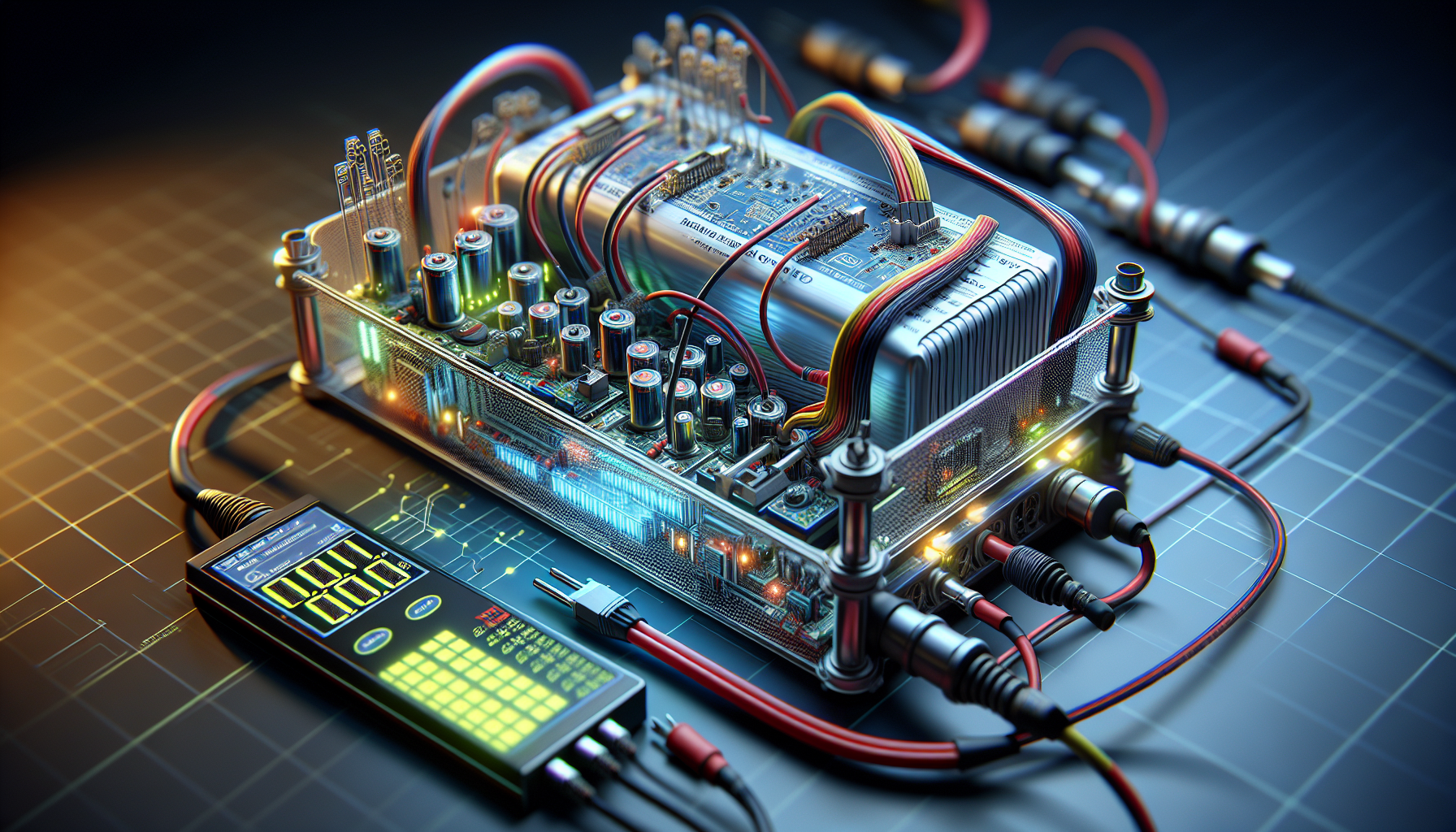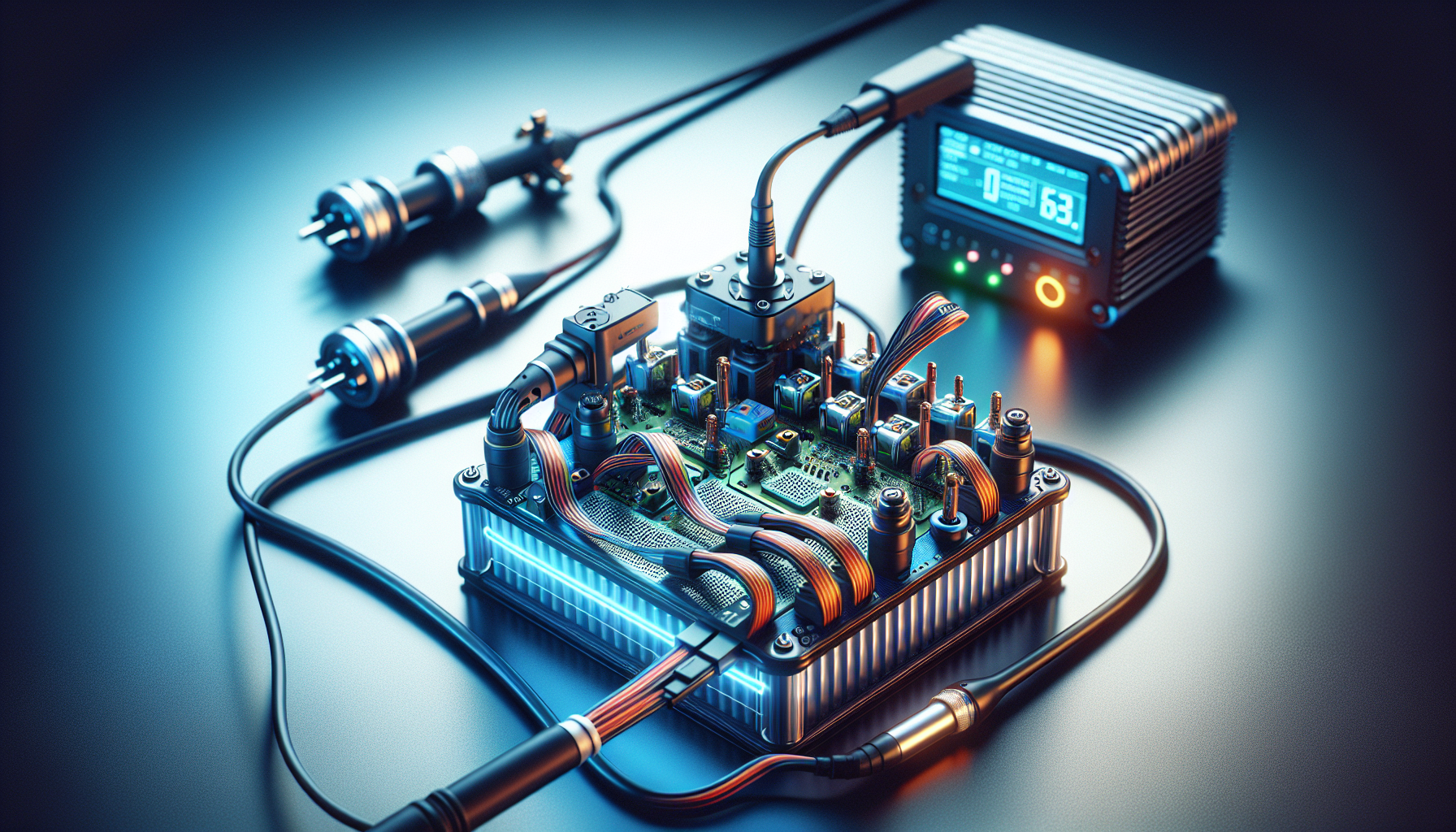Devices losing their fizz long before expected? Those pesky LiPo batteries might be out of balance! Don’t worry—every issue has a fix, and I’m here to help you sort it out. Balancing charge LiPo batteries is much like nurturing a delicate friendship; it requires patience, close attention, and a keen eye for detail.

Understanding the Basics of LiPo Batteries
Before we roll up our sleeves and begin, it might be a good idea to get to know what exactly we’re dealing with. After all, how can we fix something if we don’t understand it first? So, what is a LiPo battery? A lightweight power-pack that can turbo-charge your RC cars, drones, or even flashlights. LiPo stands for Lithium Polymer, a nod to the solid, electrolyte-based composition which allows these bad boys to hold more energy in a smaller size than other batteries.
Structure of a LiPo Battery
Picture a neat sandwich of lithium layers paired with polymer separators. Each cell in a LiPo battery has a nominal voltage of about 3.7 volts, but it isn’t as casual as flicking a switch—it requires balanced handling. Think of them as individual family members living under one roof. The happier they are, the smoother your device runs.
Why Balance Charge?
Balancing is crucial. Imagine you have a team, but one member doesn’t pull their weight. Their shortfall holds the entire team back. Similarly, when cells in your battery aren’t in sync, “underperformance” is the best you can expect. Balance charging ensures each cell within the pack has the same voltage, optimizing performance and extending the battery’s lifespan. But how does one keep these cells in line? Tea, sympathy, or something a bit more mechanical? Let’s find out.
Getting Prepared: Tools You Need
Jumping into a project unprepared is like baking without checking if there’s flour in the pantry. Gather your tools first because they make all the difference:
Essential Tools:
- Balance Charger: It should be the sort that fits your battery specifications (think of it as the referee of the cell match).
- LiPo Battery: Of course, you’ll need the star of the show.
- Fireproof Charging Bag: Playing it safe is always wise.
Optional Accessories:
- Battery Voltage Checker: So you can keep an eagle eye on the voltage.
- Connectors and Wires: Hull-a-hoops and sparkly shoes for your battery cells, keeping connections strong and smooth.
Prepare your work area—somewhere spaced and safe, preventing runaway accidents. Charge in a place you’d feel comfortable orchestrating a battery tea party.

Step-by-Step Guide on Balancing Charge LiPo Batteries
Now that we not only have a fireproof charging bag but a metaphorical fire in our bellies, let’s get things started!
Step 1: Connect Your Devices
Start by connecting your LiPo battery to the balance charger. Make sure to connect both the main lead as well as the balance lead. The balance lead connects to the adapter board to guide voltage balance across the cells. This is like a buddy system to ensure no cell takes an unsanctioned nap while charging.
Step 2: Setting Up the Charger
Switch on the charger and very swiftly go through its settings, not unlike scanning a menu of favorites for dinner. Select the LiPo battery mode. Ensure you’re acknowledging the accurate battery voltage (remember the cells, each with 3.7 volts as an idle state).
- Cell Number: Select the number of cells your battery contains.
- Charge Rate: Set the charging current. Typically, 1C (one times the capacity of your battery) is a safe starting point.
Step 3: Start the Charging Process
It’s a moment of suspense, waiting to see if everything works as it should. Press the start button on your charger and monitor when the cell voltage equalizes.
Step 4: Monitor the Process
Keep a watchful eye on your charger’s display. You’re looking out for disparities like a mild detective. The charger should automatically slow down the current flow as the cells start aligning voltages.
Step 5: Finalizing the Charge
The charger usually issues a beep or a friendly notification (more like a celebratory sigh) when the balance charge finishes. At this point, you’ll want to double-check voltages either via your charger or using a standalone voltage checker to ensure all cells agree with each other before you sign off trotting.
Tips and Safety Precautions
Charging LiPo batteries isn’t without its quirks. Each batch of electrons deserves slight tweaks and warmth.
General Tips:
- Temperature is Key: LiPos appreciate being charged in moderate temperatures. Too cold, and they’ll lag. Too hot, and they might throw tantrums.
- Regular Checkups: Be consistent with checking your battery’s voltage even when not charging. Prevention here is both better and more relaxing than cure.
- Dedicated Charger: Always use a LiPo specific charger—your old NiMH charger might grumble amidst the new volt metrics.
Safety Precautions:
- Avoid Physical Dings: Handle them well—they resist shock, but they have limits.
- Store Properly: Keep them isolated in the aforementioned fireproof bag when not in use. Explaining fire to the fire department is awkward at best.
- Never Leave Charging Batteries Unattended: A stitch in time saves nine. Especially where electricity is involved.
Common Pitfalls & How To Avoid Them
Every craftsman has his mishaps. In this world of watt hours and lithium ions, mistakes happen. Let’s capitalize on some common ones and carve the roadmap to success.
Pitfall 1: Overcharging
If cells exceed their maximum voltage, it’s not a joyous occasion; rather, it’s a dangerous one. Overcharging cuts battery lifespan and could lead to potential explosive situations.
Avoidance Strategy:
Stick to balance charging. Don’t wing it on fast charging methods without verifying the chemistry approval.
Pitfall 2: Undercharged Cells
If one cell undercharges compared to others every cycle, the whole system is on its way to becoming unreliable.
Avoidance Strategy:
Use hardware that checks and ensures the equal charge to each cell—even investing in testers would be advantageous.
Pitfall 3: Mixing up the Terminology
Instead of confusing watts with volts or amps with lithium goodness, getting terms mixed can lead to misjudged settings.
Avoidance Strategy:
A go-to glossary is your best friend. Find the perfect one and friend them (no tripping over jargon here!).
FAQs About Balancing LiPo Batteries
Everyone has questions lingering at the back of their minds, ready to pop like bubbles. Here are a few that might have crossed yours, and their explanations.
What happens if I don’t balance charge my LiPo batteries?
Neglecting balance charging could lead to poor device performance, diminished battery life, and dangerous situations like cell swelling and explosions. It’s not just a guide; think of it as a necessary process.
How often should I balance charge LiPo batteries?
Ideally, every charge should be a balance charge. Including once-a-week balance checks won’t hurt either.
Can a battery be “too dead” to repair or balance?
If a cell within a pack dips below 3 volts, it might not recover without expert intervention. Though it remains an adventure—not for the faint of heart.
Is it safe to use a parallel charging board for balancing?
Parallel charging is feasible for batteries of the same capacity and state of charge. This reduces charging time but requires extra vigilance about the matching criteria.
Final Thoughts
Engaging on a balancing charge journey with LiPo batteries may sound laborious at first, but trust me, once you master the rhythm, it’s akin to a fluid dance of numbers and processes. Remember, patience and diligence are your best allies here. Besides, the satisfaction of smooth, long-lasting, and safe device operation makes the effort both rewarding and essential. So, what do you say—ready to become a maestro in the nuanced world of LiPo battery balancing?


